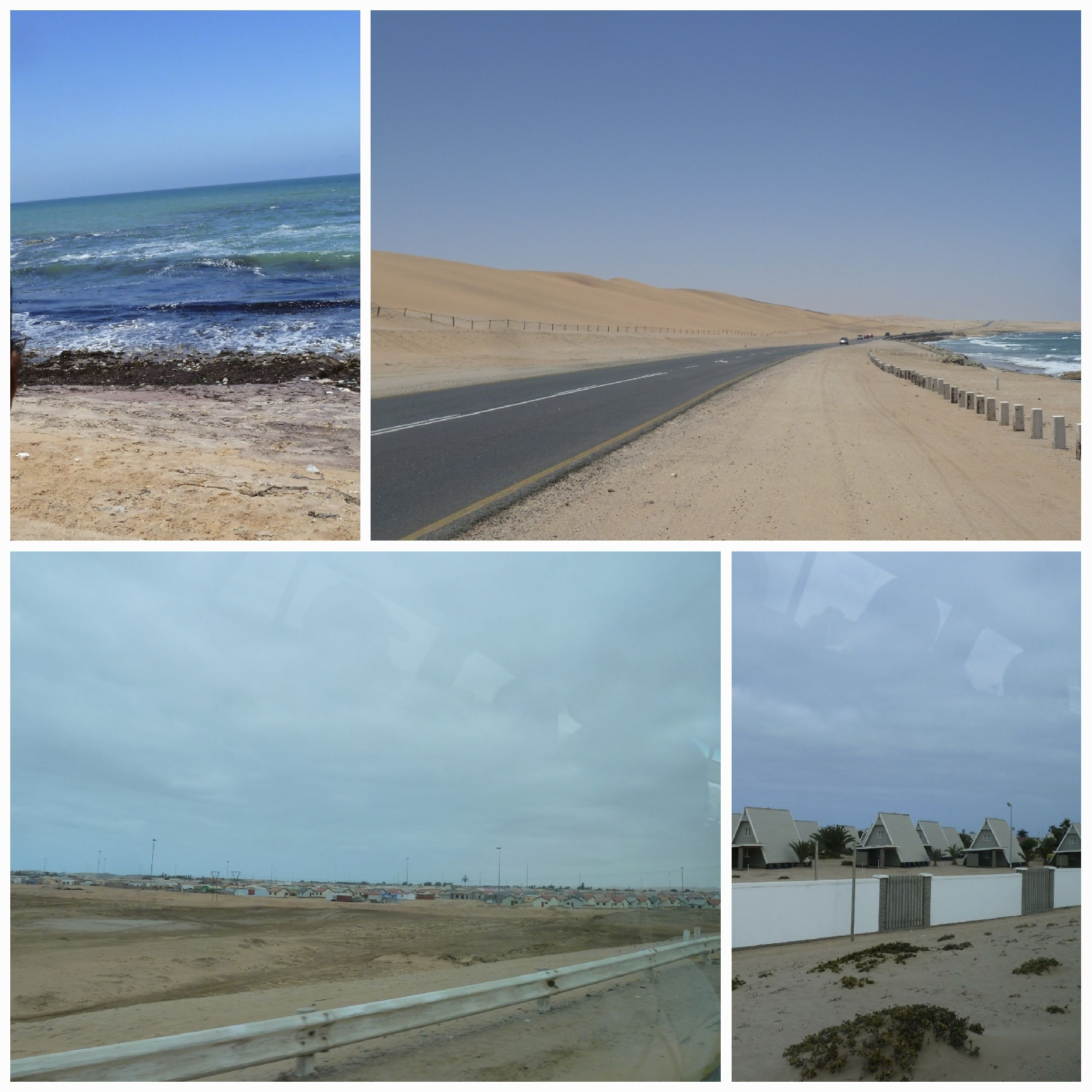Expecting the unexpected
If our cruise ship had not overnighted in Walvis Bay, Namibia, we would never have known of Swarkopmond. Incredibly the biggest coastal town, a popular local and foreign tourist destination in Namibia, and yet we had been ignorant about it. One of the best things about cruising is docking in ports that are gateways to famous cities. Passengers generally tend to book excursions to places that are touted as attractions. Many a cruiser has lamented not exploring the immediate surroundings of the port. This was an occasion where the capital, Winhoek, was too far away from the port to explore in a day. That means we get to see the side of Nambia that the ordinary 'have been to Namibia' tourist does not get to see.Thin strip between desert and sea
Public transport between Wavis Bay and Swakopmund and within the town is practically non- existent. Hence we hire a van (driven by a Zambian woman working in Namibia)) for the 30 km drive on a highway with hardly any traffic. We are dumbfounded by the unique geographical features along the way. The edge of the Namib desert meets the right edge of the highway, while on the left is the Atlantic sea whose waters have formed a salt edge along the shore. There are sub-urban settlements that seem like oases. One is a housing project and the other, closer to town, is the Swakopmund Municipal Camp with its distinctive A-shaped chalets, the mark of a beach resort. The town itself is an oases surrounded on three sides by the Namib Desert.
A well-ordered modernized town
Our driver drops us at the lighthouse around which is a lush park. The park is watered with treated waste water! It has everything one would expect in a park-- a promenade, shady copses, a play area, a variety of colourful decorative plants (some with leaves resembling coins) and benches facing the sea, etc.
The local flavour
As we walk around the lighthouse our eyes are treated to a zoo of sorts. Of course, these are sovenir shops with wood carvings of African fauna, all neatly laid out in rows. Again, as in Walvis bay , we are not harassed to buy. There is also a group of thatched huts. We almost dismiss them as shops before we realise that this is a set up by the powers that be. Topless natIve women are sitting around with their children engaged in traditional craft. It is quite obvious they are not too happy to have tourists gawking at them.
History speaks volumes
Just behind the lighthouse that houses a museum is the State House. We know we're are already in the city when we are surrounded by unmistakeable German colonial architecture. In the late 19th century the coastal town was the main harbour for German South West Africa. Elegant church spires and dozens of homes with Tudor Revival facades and gingerbread trim line the streets. Most of these buildings were built as business centres in the 1910s. They have since been repurposed, mostly into hotels, condos and museums. Bavarian bars and shops selling German goods reinforce the Germanness.
A building stands out for its red sandstone foundation and yellow walls, pale green half-timbering, gables and a small tower sticking out from the roof. Who would have known that it was a prison!
Another unassuming but beautiful pinkish building used to be the barracks.
More delights
The town has a lot to divulge as we rove the lattice of streets and turn unexpected corners. No gutters. No drain pipes. No litter. Enticing boutiques and pastry shops. Attractive potted plants. Cool air.
Dune revelations
Our driver picks us up at the appointed time to drive us back to the port. We stop to get a feel of the dunes. It's amazing how the sand has different textures (at different stages of erosion), and takes on different shades. The wind has sculpted ripples and waves on the slopes. The sand glitters and offers us glimpses of buried remains of desert fauna. The straggly brush that hold together the sand at different spots is unique to the Namib desert.
The Welwitschia plant has only two leathery, strap-shaped leaves that keep growing. They continue to be shredded by the elements lending them the look of a straggly bush. We may be on one of the oldest deserts on earth since these plants can survive for a 1000 years and more.
Geographical sense
Why are there no gutters and drainpipes? There's hardly any rain, of course. When it does rain on the desert rivers flow. The water seeps into the ground. The ephemeral rivers are harnessed. But this supplies only half of the water needed. A desalination plant accounts for the other half,
Geographical surprise
You’ll notice that I'm wearing a jacket in a desert. The proximity to the sea helps mitigate the temperatures.
The desert supplies moisture for the area in the form of fog that can reach as deep as 140 km. When heated air over desert land blows towards the cool water currents in the Atlantic ocean it condenses and fog is formed. It occurs early in the morning and late in the evening. The fog gives the town a fairytale look. It is said that fog occurs 300 days a year and sometimes hangs around for several days making the coast dangerous for sailing.
For Namibians Swakopmund is equivalent to hill resorts for those living in hot climates.
















No comments:
Post a Comment
Comments are welcome